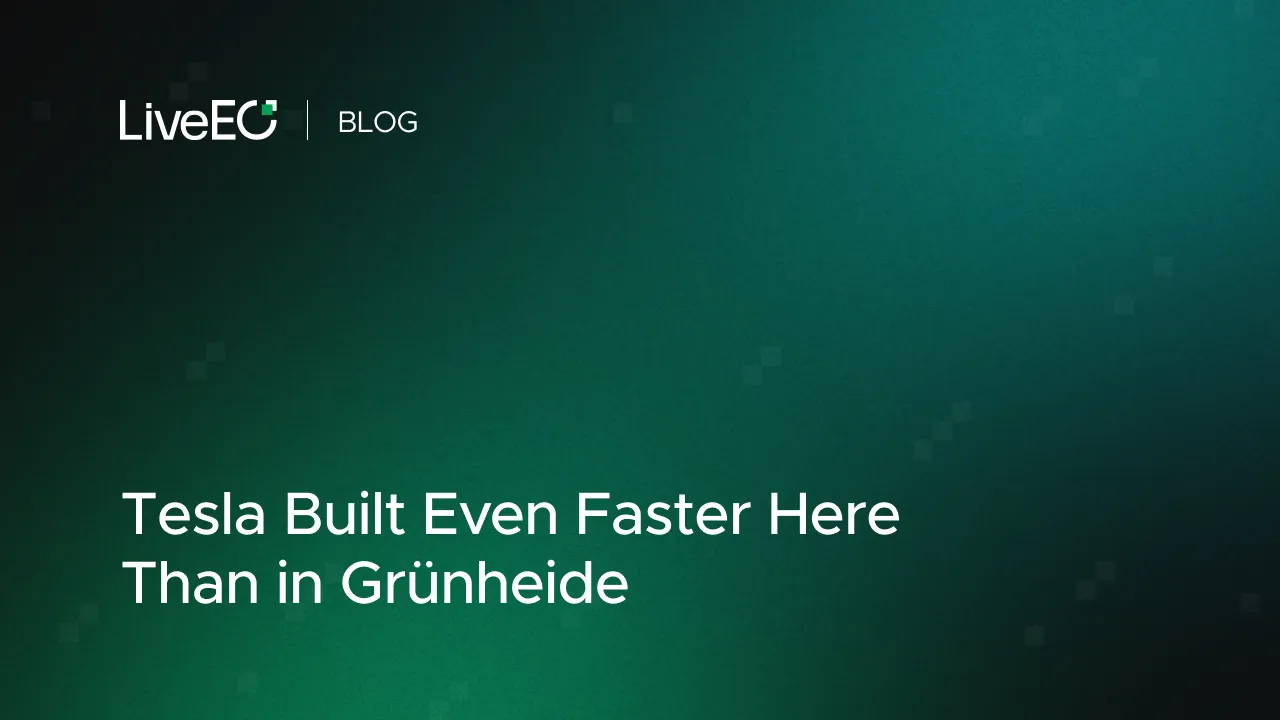Tesla’s speed in building its plant in Grünheide, Brandenburg, has stunned politicians, lobby groups and trade unionists. The Gigafactory in Texas has been built even faster, as the latest satellite images show.
“Economy from above” is a collaboration between WirtschaftsWoche and LiveEO. This is a translation of the original article written in German by “Jannik Deters und Julian Heißler“. Access the original article here.
861 days – that’s how long it took from the announcement to the opening of the Tesla plant in Grünheide. Satellite images now show how quickly the e-car manufacturer’s first gigafactory in Europe was built – at least by German standards. But the images from LiveEO also show that things went faster in Texas. Unlike in Germany, there were no delays planned there, and there was also no citizen participation. So, as the pictures show, the construction, which started later, was actually completed earlier in the end.
According to the report, Tesla CEO Elon Musk has managed to get his plant in the Lone Star State off the ground and ramp up production in less than two years. In August 2021, almost exactly one year after the foundation stone was laid, the first fully assembled Model Y rolled off the assembly line on the outskirts of Austin – at that time still in test operation.
The factory has been producing regularly since the fall, even though it is not yet allowed to deliver the cars. It is awaiting final approval from the Environmental Protection Agency (EPA). But this is also expected in the next few days. On the fringes of the SXSW tech conference, CEO Musk presented the factory to U.S. Secretary of Labor Marty Walsh. The signal: We are ready.
The 1.1 billion US dollar Gigafactory 5 has been moving at a fast pace from the very beginning. Even the approval process took only a few months. It took just under half a year from the first preliminary application to the responsible county, Travis County, to the final approval and the approval of the multi-million dollar state subsidy package that was supposed to sweeten the deal for Tesla.
Musk benefited from the fact that the site he had chosen to build his plant on was already commercially developed. Originally, a gravel and sand mine was to be built here, but these plans had fallen through. Good for Tesla, because the site had already been rezoned, additional access roads planned and approved, and traffic studies prepared. For the carmaker, the plans just had to be taken out of the drawer.


861 days – that’s the number Brandenburg’s Minister President Dietmar Woidke had at the ready, of course, when he congratulated Musk and all of Germany this week on the accelerated process in Grünheide. Politicians, the Chamber of Industry and Commerce and trade unionists, for all their concerns about the strain on the environment and the region’s infrastructure, were equally amazed at the speed on the deforested site over the past two years.
The Gigafactory Berlin-Brandenburg is the first in Europe, alongside four production facilities in the USA and one in Shanghai. After the announcement in November 2019, construction started in spring 2020. For a long time, Tesla built the factory at its own risk, with a total of 19 pre-approvals. Only three weeks ago, the State Environmental Protection Agency granted Tesla the final permit. However, the company still had to comply with 400 conditions and requirements imposed by the authorities. These included drinking water, air pollution control and the handling of incidents.
{{inline}}
Now the current 3000 employees have started production of the all-electric Model Y compact SUV. Tesla itself speaks of the “most advanced, sustainable and efficient factory to date. Water consumption per car is well below the industry average, at 2.2 cubic meters compared to 3.7 cubic meters. The paint shop uses significantly less solvent than comparable plants, and the planned energy consumption per battery cell produced is reduced by 70 percent. Eventually, the aim is to produce 500,000 cars per year in Grünheide. Cost per car: 64,000 euros. But the plant is still a construction site in many places. The first of three expansion stages has been completed, and the battery factory on the site is not yet ready.
For politicians, the project is nevertheless proof that German administrations and authorities are very capable of prioritizing and accelerating construction projects, even if not on a US scale. This comes in handy for German Economics Minister Robert Habeck, because the Gigafactory in particular is paying off the prescribed energy turnaround. The delays at the construction site caused by the retroactively requested battery factory, the complaints from residents and environmental activists, and Musk’s complaints about German slowness seem to have been forgotten.
The construction of the Grünheider sister factory near Austin, Texas, was more to his liking. Musk wants to prove that everything is even bigger in Texas on April 7. On this spring day, he is inviting people to the “Giga Fest” in Austin – a gigantic inauguration party in every respect for the new Tesla plant southeast of the Texas metropolis of Austin. Around 15,000 visitors are expected to be able to tour the new factory on this day. At the open day in Grünheide six months ago, there were just over half that number. The observer blog Teslerati has already calculated that the celebration could become “the biggest barbecue in the history of Texas”.







